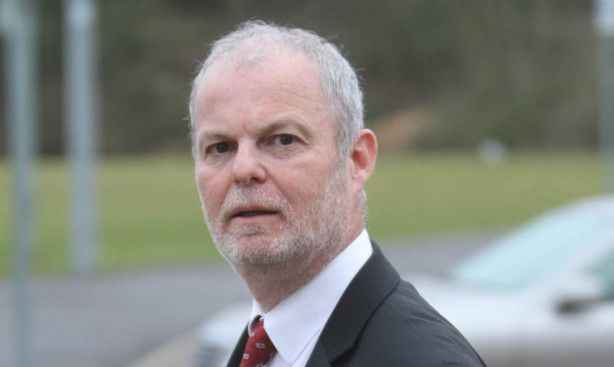A pizza chef who confessed to killing a man by hitting him on the head with a frying pan should not be convicted of murder because medical experts have been unable to establish the cause of death, a jury has been told.
Defence counsel Mark Stewart QC said there was no dispute about the fact that Bulgarian immigrant Nikola Zhulev had attacked Alan Gardner after the 49-year-old jeweller accused him of stealing £50 from him.
But Mr Stewart said there was no evidence to prove that Zhulev’s admission that he had struck Mr. Gardner with the pan did not establish that he had either killed him or murdered him because there was no medical evidence to prove the blow caused his death.
The Crown’s only medical expert, forensic pathologist David Sadler, 51, had concluded that the cause of death was not known and possibly due to a number of underlying illnesses.
The final death certificate said the cause of death was “unascertained”, possibly relating to a head injury, asphyxia, acute and chronic alcoholism or an narrowing of the arteries.
Mr Stewart told the jury: “We’re dealing with a man who at the time of his death suffered a number of naturally occurring medical conditions, one coexisting with the other. Each and any one of them might have proved fatal at some stage, according to Dr. Sadler.
“I’d suggest that people who have chronic potentially fatal ill health live with that until it kills them. Someone who has something wrong with them and it kills them had that the day before and they were fine.
“In proving murder against Mr Zhulev, the Crown requires as a first step to prove that it was not one, other, or a combination of these established and potentially fatal natural conditions that caused Mr Gardner’s death, but to prove beyond reasonable doubt it was that single blow to the head by the pan that killed Mr. Gardner and that that blow was part of a murderous attack on him by Mr Zhulev.”
He said the Crown had failed to bring before the jury sufficient evidence that the blow to the head killed him and it did so a part of a murderous attack by his client, who he admitted was a heroin addict and a low-level thief.
He added: “If the blow to the head was from what you might describe as a non-murderous attack a blow of limited force causing limited non-fatal injury but it triggered a natural event such as a fit or an arrhythmia then in my submission that still would not prove murder but would prove the lesser but still serious crime of culpable homicide.”
He said the violent assault had been “more a panic than a plan” and dismissed prosecution suggestions that it had been part of an elaborate plot to murder Mr Gardner for money then avoid prosecution by burying his body in a woodland grave in “an active and drastic attempt to prevent discovery”.
He said medical science, with all the resources of the Crown deployed to assist the doctors involved could not tell us what killed Mr Gardner, so for the crown to say that Zhulev had told a friend that he hit him on the head and killed him wasn’t evidence of what killed Mr Gardner.
Mr Stewart went on: “It might be evidence of what Mr Zhulev thought killed Mr Gardner. Doctors can’t tell you and they’ve examined Mr Gardner inside and out.
“None of the possible causes if death could be established even as an opinion let alone as a fact. I submit it must be perfectly clear that you as a lay jury should not be satisfied to the required standard that death was the result of an assault by Mr. Zhulev on Mr. Gardner either alone or in combination with other natural causes.
“You may be and remain suspicious. I say these suspicions are not evidence.
“You may be dissatisfied by that void in the evidence and where it leaves you, but that is not an excuse to make any development theories of your own not supported by the evidence.
‘it’s not for you to fill in the gaps created by voids in the evidence. It is your job to scrutinise the evidence and decide: has the Crown proved its case or have they not?”
Zhulev, 30, a father on one, denies murdering Mr Gardner at his home at Croft Park, Balbeggie, Perthshire last April and attempting to defeat the ends of justice by concealing his body in nearby woodland.
The trial, before Lady Rae, continues.
